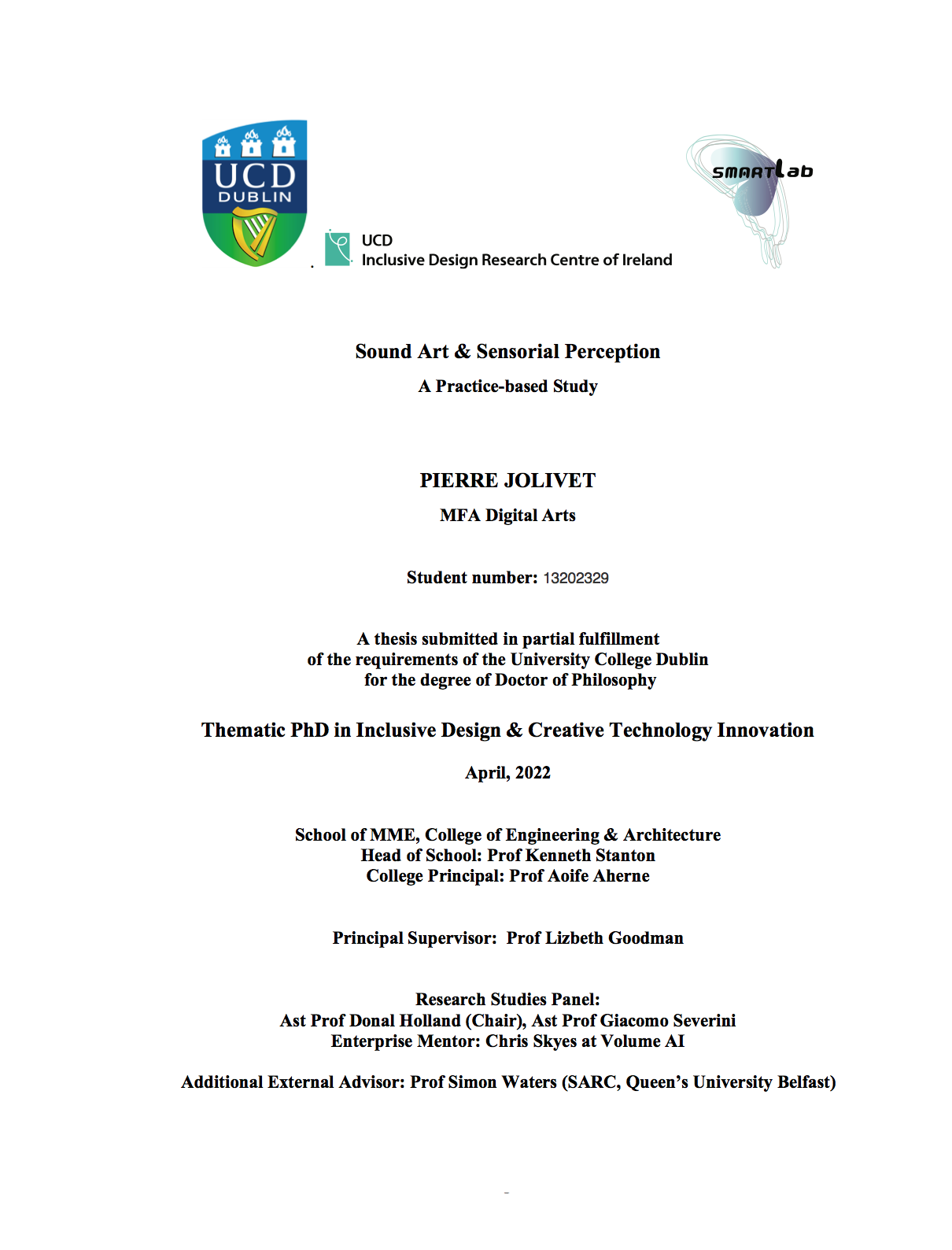Pierre Jolivet
Sound Art and Sensorial Perception: a practice based study
(2022)
About
This practice-based PhD set out to design and apply novel multi-channel and nonintrusive electroencephalographic wave analysers, along with environmental sensors, to provide extensive compositional biofeedback in gallery and non-gallery settings as well as public spaces where Virtual Reality, Augmented Reality and/or Mixed Reality technologies may also possibly be in use. There is a current gap in knowledge about the nature and behaviours of auditory processes and interactions in both sound art performances and in-built environment situations (whether in the art gallery or any other type of space); some research has been conducted but this unique combination of concerns has not to date been investigated in either practice or theory in the manner undertaken in this thesis. The methodology of the research is practice-based experimentation to contrive and assess sound art, in situ, ranging from small venues to outdoor public spaces. The intention is to better characterise sensory feedback established from a practice-based research to a comprehensive explorative framework. The intended result - as achieved in this PhD - is to map a multitude of possible correlations and interactions to create responsive immersive conditions. The intended outcome - also achieved - is to develop a new method for compositional design and perceptual analysis of relevance and applicability to a variety of spaces. The compositional aspect of this novel research project has built upon Sound Art and Sensorial Practice, and has woven in and informed this practice with theory and critical frameworks to help future practitioners and scholars engage with the work and take it further in their own ways, for their own purposes. The thesis as a whole delivers a written dissertation that builds upon and shares new knowledge gained from the practice-based study, and offers a new and novel set of techniques that future audio-visual artists and designers alike may choose to apply, in order to induce a sensorial dimension in their own works, whereas future scholars may build upon the methodology and the examples provided as a starting point for future Sound Art Practice research. The Sound Art practice is itself submitted as an integral part of the thesis and should be listened to in conjunction with reading of the materials. Overall, the perceptual findings inform a research methodology and educational foundation underpinning a new basis for research and development in the fields of Sound Art, Acoustics and Architecture.
Pierre Jolivet’s PhD is availabe for download at: https://researchrepository.ucd.ie/handle/10197/12924
